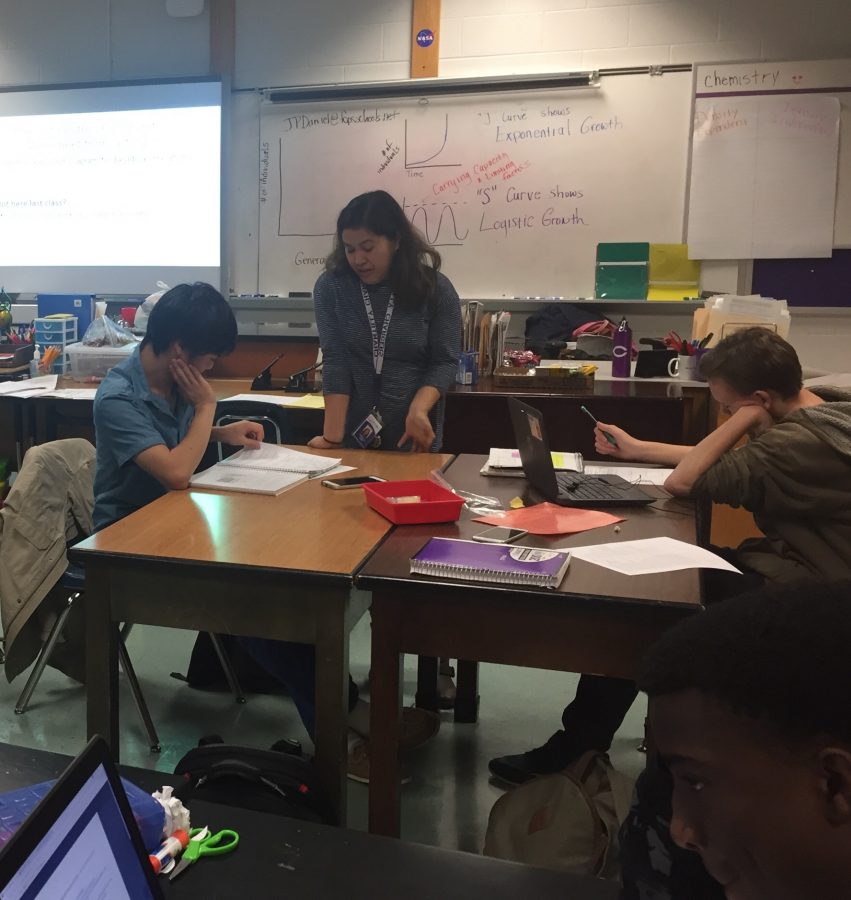Subschool 5 aids diverse group of learners
December 9, 2016
Scattered around the building, subschools provide students with a place to meet with their counselors and assistant principals, ask questions and come in when they’re tardy. Throughout the course of the school year, students form a relationship with a wide number of faculty members. Students who have existing mental and social challenges start in Subschool 5 as freshmen, but if these challenges arise during or after freshman year and begin to hinder success, a student may be transferred to Subschool 5.
While the program is formally known as the Comprehensive Services Site, it’s more commonly known as Subschool 5. The subschool helps its students develop emotional and social skills with unique services, such as smaller classes and a specialized team of psychologists and counselors.
“Our goal is to give kids the support they need to thrive in all of their classes,” Subschool 5 psychologist Michael Axler said.
Because the subschool caters to fewer students, the faculty members are able to form strong bonds with their students, which is one aspect credited with its success.
“We meet with [the students] when they need a break or when they’re struggling,” Subschool 5 counselor Amy Deemer said.
Subschool 5 classes are often team-taught, and usually are smaller in size. Students have a wide variety of classes to choose from as the subschool offers all core classes and numerous electives. Once a student has developed the skills needed to succeed in a general education environment, the individual may be moved to mainstream classes.
While the small nature of the subschool is beneficial in many ways, students throughout the rest of the building may think that it is separated from the other parts of the school; however, this assumption is untrue.
“The students we cater to are a very diverse group of people who enjoy a number of different activities,” Subschool 5 Assistant Principal Rebecca Daniels said. “They differ in the ways they learn, but they’re still kids- still teenagers.”
Due to Subschool 5’s location on the side of the school, many students are unaware of what it actually means to be in the subschool.
“Subschool 5 is often thought to be for kids who are ‘bad’ or ‘crazy,’ but our students are regular kids who have common emotional and behavioral difficulties such as anxiety, depression or ADHD,” Axler said. “These difficulties pose challenges to their learning and make it hard for them to do well in a larger environment.”
In order to change this stigma, faculty members in Subschool 5 encourage their students to interact with the rest of the student body by taking electives, playing sports and joining clubs. As another way to prompt inclusion, all students have lunch and P.E. together.
“It’s important for kids to identify a common interest. It’s not about what subschool [students] are in; the things they’re passionate about matter more,” Axler said.
Staff members work to equip students with skills to help them succeed not only in high school, but also throughout the rest of their lives.
“Our Employment Transition Representative, Teresa Clawson-Keeton, goes a step further and helps seniors find jobs they might be interested in after high school,” Daniels said.
The Subschool 5 staff continues to work diligently to help students achieve their goals.
“Subschool 5 isn’t a black mark on your record or something to be ashamed of,” Axler said. “It’s about what you need to help you learn and grow.”


